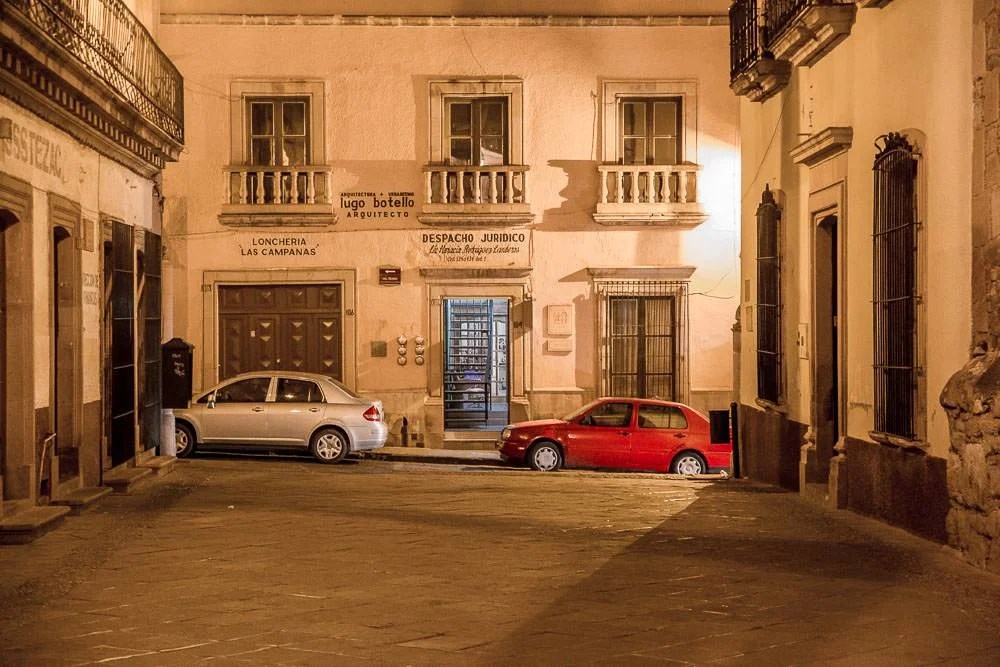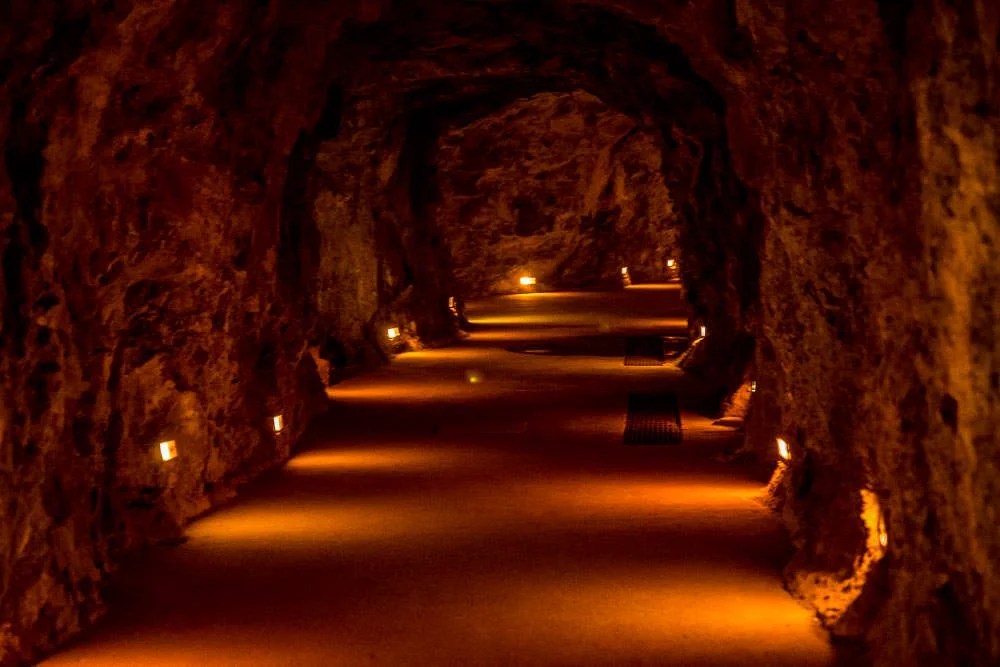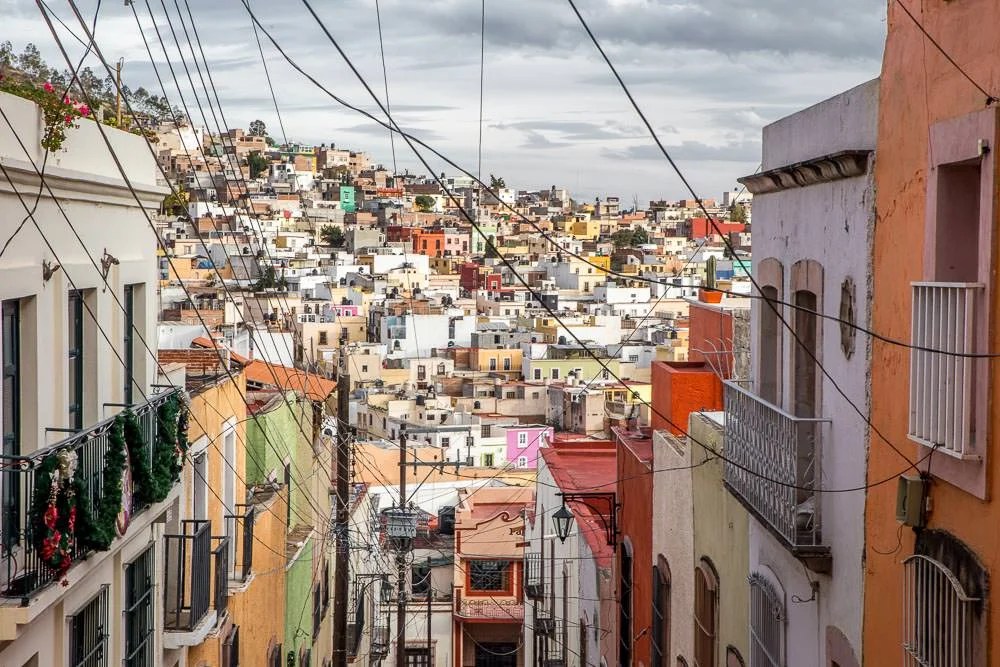After our time in Durango, we were craving a little outdoor time, some peace and quiet to enjoy the clear skies and solitude. Luckily, in Mexico, you are never far from a national park of some sort.
The Sierra De Órganos National Park was a short drive south of Durango in the state of Zacatecas.
As we drove towards the park, we began to question how interesting it was actually going to be. The scenery appeared to mostly be rolling hills and grassy fields on the road in… it wasn’t really looking like national park material. It seemed like they were really scraping the bottom of the barrel here.
We had decided that even if the park didn’t turn out to be that inspiring, it was still going to be an acceptable spot to camp.
After arriving in the park, we were proven completely wrong. In a good way. Far from being disappointing it was pretty darn scenic. As an added bonus, we had the park to ourselves for most of the time we were there and it was indeed a more than acceptable spot to spend a night.
Nestled into a camping spot like this, we felt like we were back in Utah, although the rocks weren’t as red, they were just as clearly from another planet.
We were hoping for a chance to shoot another star time-lapse, but the clouds had differing opinions.
Refreshed from a brief encounter with the great outdoors, we were ready to continue our journey south.
Sometimes we find ourselves navigating winding and dusty back roads, such as those in the Copper Canyon or the Baja Peninsula. But what is even more of a challenge is winding our way through the narrow cobbled one way streets of a colonial town. With or without maps, that one is always a mission.
After a brief, failed and confusing lunch stop in Sombrerete, where we completely failed at tackling the one way system, we swore we would be more successful in navigating the next town we visited.

That town was Zacatecas. Having really enjoyed our time in Durango, we made the decision to stay for a day or two in the centre of town and see what Zacatecas had to offer.
It turns out it had a lot.
As we drove in to town, we saw signs for an historic aqueduct, which we promptly got to drive right under. Off to a good start.
It was after that the the streets narrowed and began to wind backwards and forwards, crisscrossing in a web of not-always clearly marked one-way chaos. This is pretty standard for any colonial Mexican town. We were expecting it. It didn’t mean that we were prepared for it.
We had found the address of a cheap central-city hostel and were hoping to use that as a home-base to explore the city.
Javier (our constantly confused GPS) was completely unaware of the one way system. That didn’t help. He consistently tried to direct us into oncoming traffic, then up a couple of sets of stairs and once down a narrow pedestrian alleyway.
We left Javier to chatter away to himself and instead asked some serious questions of Google maps.
The location we were trying to get to was on a stretch of street where the one way system suddenly changed direction, we had to perform some rather elaborate manoeuvres to get to the area. Then we had to find somewhere to park. Also a problem.
After Google directed us down a road blocked by several parked cars, we gave up, found a parking spot outside a nearby church and walked the remaining blocks to the hostel.
The town had looked pretty interesting as we had followed (several times over) the circuitous route we had to take to get anywhere near our destination. This meant we were keen to stay, even though parking looked like it could be a bit of a problem.
Luckily, the chap behind the desk said he was heading home for the weekend and we could have his parking spot right outside the front door when he left in 20 minutes. Excellent.
It wasn’t five-star luxury, the bed was sufficiently lumpy and soft that it caused serious back issues to anyone who so much as took a passing look at it. Also, the showers leaked into the hallway from time to time. But we had our own private room, with a hot shower, warm blankets, electricity. Even a TV. Fancy.
The hostel itself had real personality, a funky downstairs kitchen area and a gorgeous rooftop spot to watch the city below. All the rooms were accessed by various winding staircases around the building—we knew it was going to be the perfect home-base for the weekend.
There was all sorts happening in town, crowds wandered around the streets and in and out of shops and restaurants. At one point we accidentally wandered though some sort of incredibly disorganised protest, soon after we were watching a street performer— although the jokes were in Spanish so everyone else was laughing, we weren’t—next thing we were caught in a crowd swarming out of the doors of a church.
As the sun set the city lit up and the streets came alive even more. Packed with traffic and brightly lit buildings the city became a rather magical place to explore.








Performers dressed in historical get-up were wandering about trying to collect an audience for their show. We were intrigued, but ultimately declined. It was meant to be the historic retelling of the city’s past, entirely in Spanish—the tickets were a bit pricy for our taste, given that we really weren’t going to understand it. We put that on the list of ‘stuff to come back and do once we get this Spanish thing sorted’ and continued our wandering.
Soon, we stumbled on a quirky restaurant and stopped for a suitably disappointing meal, cursing the lack of descent street vendors in the town’s colonial centre. At least the restaurant’s decor was interesting.
Sorry. Forgot to take any photos inside the restaurant. Good news is that you are now probably as disappointed as we were with our meal.
On Sunday morning we were up early, exploring the empty streets as everyone in town slept off the night before. The city took on a whole different character when the people were sleeping. Closed store fronts and empty roads greeted us around every corner, but the colonial beauty of the buildings shone through in the grey early morning light.


















After being given a very long list of suggestions from a lady who spoke to us at length about the virtues of the city, we set off to check out a few of the tourist spots. Our budget didn’t really include much beyond what we were already paying for accommodation and we’d already blown a heap of cash on our below average meal out the night before so we just chose sample a few highlights.
First on the list was Mina El Eden. It was a jazzed up former silver mine that burrowed its way beneath a hillside suburb of Zacatecas. Apparently if we had visited the day before we would have been able to visit the underground nightclub that is buried deep in the hillside and only accessible by an underground train. Not open on Sunday afternoons apparently.
The mine tour itself was goofy, touristy and cheesy, but somehow still rather informative. It gave us a glimpse into the simply terrifying mining practices of the past. The guide was impressive, giving his speel fluently in both Spanish and English, giving us an opportunity to attempt to improve our Spanish as we went.
Also, we got to wear some very stylish health and safety gear.














When the tour finished the guide said, ‘Now you can either walk back the way you came in. Or you can hop on the train and it will take you somewhere else in the city’. Not knowing where this ‘somewhere else’ was, or how far we would have to walk back, we of course opted for the sensible decision and hopped on the mystery train.
Somehow, by the time we made it to the Museo Rafael Coronel it was just about to close up shop. The chap let us have a quick look around outside, most importantly in the chapel, which was in a fascinating state of suspended decay. However, he told us we’d have to come back the next day if we wanted to see the collection. Sadly we were leaving the next day before the museum opened, we had a date with Guanajuato and still needed time to get to Guadalajara and Tequila first.
The now preserved crumbling-remnants of a convent house this museum, that alone was worth the short walk from our hostel, even if we didn’t get to see any of the art.
This oversight that had us arriving too late in the day meant that we also would not be seeing the Museo de Francisco Goitia while we were in Zacatecas.
We had to make do with this little tribute nestled into a nook in a plaza.
Just another couple of items we added to the list of ‘reasons to come back to Zacatecas’ and spend a bit more time exploring this fascinating city.
We instead contented ourselves with a bit more wandering around and soaking up the scenery.











We also didn’t splash out on a ride in the cablecar, figuring we could walk up the hills for free. Although, in retrospect, we think this one is on the list of things to do when we are back in the neighbourhood.
Not that the view from the roof of the hostel was too shabby:
On the way out of town we drove up to La Bufa (At the other end of the cable car line).
Here statues paying homage to Mexico’s revolutionary past and sprawling vistas of the vast city kept us entertained slightly longer than we intended. We hit the road south a bit later in the day than we had hoped. We think it was worth it.




Click the panorama below to get a closer look at the sprawling city of Zacatecas:


























2 Comments
The dog peeking out of the window…wrong way guys! Can’t get enough of your photos:).
Looks lovely! Do love those little Mexican towns 🙂